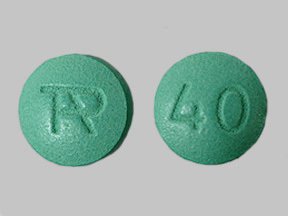- heart attack,
- stroke,
- pulmonary embolism,
- deep vein thrombosis (DVT),
- unstable angina, and/or
- sudden cardiac arrest (cardiovascular death)
Uloric lawsuits center on Takeda’s alleged failure to warn doctors and patients about Uloric‘s heart complications. And because cardiovascular events are often fatal, many lawsuits involve wrongful death claims by the victims’ families.

1. What are the grounds for a Uloric lawsuit?
The primary claim Uloric victims are suing Takeda for is that it failed to warn doctors and patients about the drug’s cardiovascular risks. Plaintiffs would need to prove the following elements to win a “failure to warn” claim:
- The Uloric manufacturer Takeda knew about Uloric’s cardiovascular risks;
- Uloric is dangerous to people who take it;
- Ordinary consumers would not have recognized the potential dangers;
- Takeda failed to adequately warn of the potential dangers; and
- The lack of sufficient warnings was a substantial factor in causing the plaintiff’s harm1
Helping the plaintiffs’ case is the mountain of evidence indicating that Takeda knew Uloric could cause serious heart problems:
- As early as 2009, the U.S. Food and Drug Administration (FDA) would only approve Uloric doses of 40 and 80 milligrams. This is because of the possibility that it could cause heart problems in larger doses;
- The FDA included a warning on Uloric’s marketing label that mentioned the possibility of Uloric causing cardiovascular problems;2 and
- The FDA required Takeda to conduct a postmarket clinical trial to test whether Uloric carried a risk of cardiovascular problems3
This clinical trial — called the CARES trial — was supposed to end by 2015. However, Takeda did not release the results until mid-2018. This happened to be only a short time before Takeda’s patent protection for Uloric in the U.S. was set to expire.
The CARES trial revealed that people who took Uloric tended to die from cardiovascular events at a significantly higher rate than those who took the older drug, Zyloprim (Allopurinol).4
1.1. Current status of Uloric warnings
Following the release of the CARES trial results, the FDA issued a safety announcement. It stressed to doctors and patients that Uloric carried a higher risk of heart problems than Zyloprim.
This safety announcement also narrowed the FDA’s list of approved uses of Uloric. Now, Uloric’s uses include only patients who had already tried Zyloprim but experienced adverse reactions.5
In addition to the FDA’s safety announcement, the FDA also updated Uloric’s warning label. The included a box warning that prominently warned doctors and patients about the risks of developing a potentially fatal heart condition from taking Uloric.
Adding this box warning to Uloric’s warning label is a big deal. This is because box warnings are reserved for life-threatening health risks that the FDA considers to be significantly heightened by a drug.6
2. Who can be a plaintiff?
Any patients who took Uloric prior to the 2019 box warning and who developed cardiovascular problems may have a claim against Takeda. If the Uloric user passed away from a cardiovascular event, his/her family may be able to sue for wrongful death instead.
Uloric users who experienced heart problems are still eligible to sue even if the drug successfully treated their gout. Uloric is often effective in treating hyperuricemia by preventing the uric acid buildups in tendons and joints. But that Uloric helped patients in one way does not prevent them from seeking justice for getting harmed in another way.

3. Where are plaintiffs filing the lawsuits?
Lawsuits are being filed all throughout the United States. Plaintiffs typically file in the state where they live. Though several lawsuits are in Massachusetts, where Takeda’s U.S. subsidiary is based.
As time goes on, these separate lawsuits will likely be joined in a federal multi-district litigation (MDL). MDLs help to streamline the pretrial process to produce a settlement as early as possible. Scroll down to section 5 to learn more.
4. When will settlements be paid?
Settlement talks probably will not begin for another couple of years. Assuming these Uloric lawsuits are consolidated into an MDL soon, it will take at least a year before the first few cases go to trial — called “bellwether trials.”
The size of the final settlements will hinge on how these bellwether trials resolve. If Takeda loses and has to pay hefty punitive damages, that is a good sign for the remaining plaintiffs. Takeda may then offer a generous settlement in exchange for dropping the lawsuit.
When negotiating a settlement, the plaintiffs’ attorneys aim to get enough money to cover the following compensatory damages:
- Medical bills paid for treatment;
- Anticipated medical expenses in the future;
- Lost wages from the recovery process;
- Lost income because of the lasting repercussions of the cardiovascular problems caused by Uloric;
- Costs of home modifications made necessary by mobility problems caused by Uloric;
- Physical pain and mental suffering; and
- Loss of companionship felt by the victim’s family
If the Uloric user died, then the victim’s family could also seek compensation for funeral expenses and loss of support.
5. Is this a class action or individual lawsuits?
Individual lawsuits. Eventually, these lawsuits will likely consolidate into an MDL (multi-district litigation).
Unlike class actions, MDLs keep the lawsuits separate. But like class actions, MDLs help speed up the litigation and settlement process.

Call us for help…
If you or a loved one has taken Uloric and suffered heart problems, talk with a lawyer. The statute of limitations requires Uloric lawsuits to be filed soon after an injury was suffered — often within two years. So learning your legal rights and filing a lawsuit has to be done quickly.
The defective drug lawyers at Shouse Law Group can help you understand the process and your legal options. Call us to learn your rights and how to recover the compensation you deserve.
Note that Uloric users who developed Stevens-Johnson Syndrome and Topical Epidermal Necrolysis may also have a “failure to warn claim” against Takeda. Learn more in our article about Uloric skin disoder lawsuits.
Legal References:
- See, e.g., CACI No. 1222. Negligence—Manufacturer or Supplier—Duty to Warn—Essential Factual Elements Judicial Council of California Civil Jury Instructions (2017 edition).
- FDA Warning Label for Uloric – 2009; FDA Approval Letter for Uloric – 2009.
- See id.
- Cardiovascular Safety of Febuxostat and Allopurinol in Participants With Gout and Cardiovascular Comorbidities.
- See Takeda Press Release, “Takeda reports FY2017 full-year results and issues FY2018 guidance,” (May 14, 2018).
- FDA Warning Label for Uloric – 2019; See Choi H, Neogi T, Stamp L, Dalbeth N, Terkeltaub R, “New Perspectives in Rheumatology: Implications of the Cardiovascular Safety of Febuxostat and Allopurinol in Patients With Gout and Cardiovascular Morbidities Trial and the Associated Food and Drug Administration Public Safety Alert,” Arthritis Rheumatology 70(11):1702-9 (November 2018); FDA Drug Safety Communication, “FDA adds Boxed Warning for increased risk of death with gout medicine Uloric (febuxostat),” (February 21, 2019).
